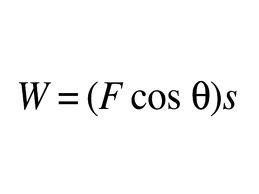Overview
In the winter sport of ice hockey, players, sticks, and the puck all move at a rapid pace. Sports scientists know that the apparent chaos of the game is governed by math and physics principles such as laws of motion; angles, vectors; transfer of potential energy to kinetic energy; and force, impulse, and collision.
Three Laws of Motion
The players, sticks, and the puck observe Newton’s Three Laws of Motion like any other moving object. For example, a player standing on the ice will stay in the same position because of inertia, unless something happens to change his position, like a body check. Similarly, a hockey puck will travel in a straight line at the same speed, unless a player strikes it with his stick or a goalie stops it. The Second Law of Motion is described mathematically by the equation F=ma, where F stands for force, m, mass, and a, acceleration. Hockey players apply force to the puck with blows from the hockey stick. A typical 100 lb. force of a slapshot creates enough energy to propel the puck at high velocity toward a goal. In the Third Law, the Law of Conservation of Motion, for every action, there is an equal and opposite reaction, so that the force applied to the puck sends it moving in another direction.
Angles and Vectors
A hockey rink consists of many geometric shapes, such as face-off circles, a cylindrical puck, and semicircular zones for goals. The angle between the blade of the hockey stick and its shaft is an obtuse angle of about 135°. When the puck hits the board at the side of the rink, the angle of incidence that it travels in equal to the angle of reflection that it makes when it veers away from the board. The moving puck has a velocity vector, as do the moving players and their sticks in constant motion. The vector has both speed and direction, and can be calculated.
Potential and Kinetic Energy
The Law of Conservation of Energy states that energy cannot be created or destroyed, just change form. Thus, the potential energy from the motion of the hockey stick in the player’s hands is transferred to the kinetic energy of the moving hockey puck as it accelerates. Kinetic energy is energy of motion, while potential energy is the power that will propel the puck into motion.
Force, Impulse, and Collision
Force is the push or pull needed to accelerate an object (such as a hockey puck) by changing its velocity. It can be constant, or for a short time. During a slapshot, the blade of the hockey stick is in contact with the puck for less than 1/200 of a second. The measure of that impulse, or force multiplied by change in time, shows that brief transfers of energy can result in motion and goals scored. Collisions can be either elastic, where an object retains force and energy, or inelastic, where the object’s energy is dissipated, such as when a goalie traps the oncoming puck, preventing a score.
Interested in science and physics tutoring services? Learn more about how we are assisting thousands of students each academic year.
SchoolTutoring Academy is the premier educational services company for K-12 and college students. We offer tutoring programs for students in K-12, AP classes, and college. To learn more about how we help parents and students in Florence, SC: visit: Tutoring in Florence, SC





